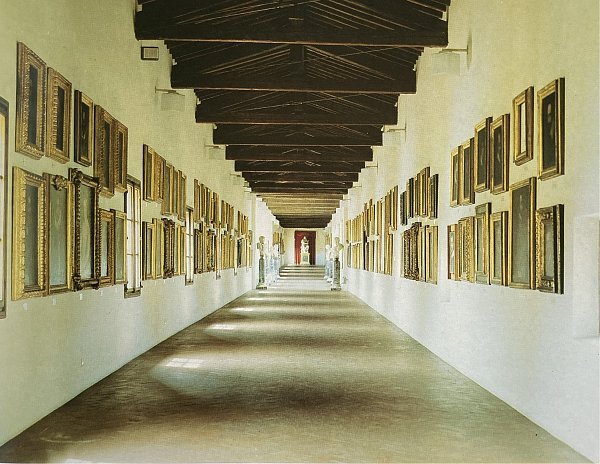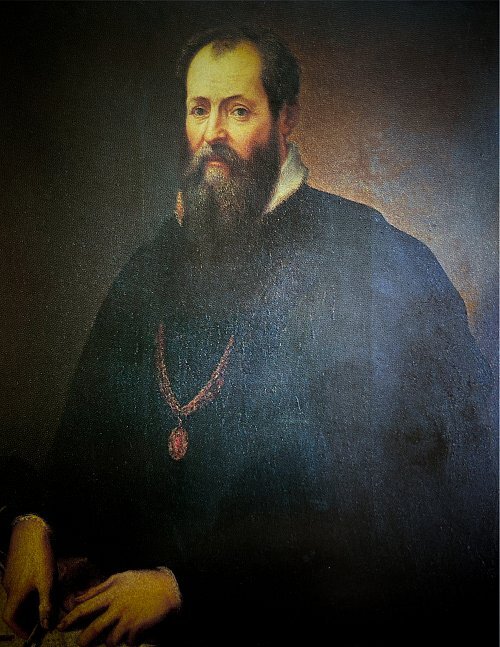El famoso corredor de Vasari
La entrada se encuentra en el tercer pasillo, entre la sala 25 y la sala 34. El pasillo, que atraviesa el río Arno por encima del Ponte Vecchio y conecta la Galería Uffizi y el Palazzo Vecchio con el Palazzo Pitti, fue encargado a Vasari por Cosme I de Médici y se completó en muy poco tiempo, cinco meses, en 1565.
Sufrió graves daños durante la Segunda Guerra Mundial y no pudo reabrirse al público hasta 1973. El recorrido se extiende a lo largo de casi un kilómetro, y las ventanas y «ojos» que se abren a lo largo del mismo ofrecen a los visitantes evocadoras vistas de la ciudad, el río y el Ponte Vecchio. Una ventana, recientemente reabierta, da al interior de la iglesia de Santa Felicita, en el Oltrarno, y parece que desde ese mismo mirador asistían a misa los grandes duques.
En el Corredor Vasariano se exponen numerosas obras de los siglos XVII y XVIII. Las primeras salas exhiben notables pinturas de pintores caravaggistas, entre los que destacan Gherardo delle Notti con La buena fortuna, Brindis en el Olimpo y La cena con el laudista; Rutilio Manetti, Francesco Rustici con Pintura y arquitectura; Artemisia Gentileschi con Judith y Holofernes; y Guido Reni.


A continuación, se exponen obras de pintores italianos del siglo XVII, desde Annibale Carracci hasta Guido Reni con su Endimión durmiente. Un largo pasillo alberga pinturas italianas del siglo XVII, divididas por ciudades; entre ellas se encuentran La conversación sagrada, de Giovan Battista Crespi; Sibila Samia, de Guercino, y un Retrato del cardenal Agucchia, de Domenichino. También hay obras de la escuela napolitana, entre las que destacan Salvator Rosa, Battistello Caracciolo, Cerquozzi y Giuseppe Recco con uno de sus bodegones, la espléndida Feria de Poggio a Caiano de Giuseppe Maria Crespi, putti in volo de Giovan Battista Tiepolo y, por último, algunos lienzos de Rosalba Carriera y Pompeo Batoni.
La parte más famosa del Corredor Vasari es la dedicada a la extraordinaria colección de autorretratos de todas las épocas, tanto italianos como extranjeros. Entre los italianos destacan los de Leonardo, Vasari, Agnolo, Taddeo y Gaddo Gaddi, Romanino, Andrea del Sarto, Bronzino, Tiziano, Jacopo Bassano, Palma il Giovane, Veronese y muchos otros. Concluye el itinerario una colección iconográfica con retratos de personajes famosos de diversas épocas.
